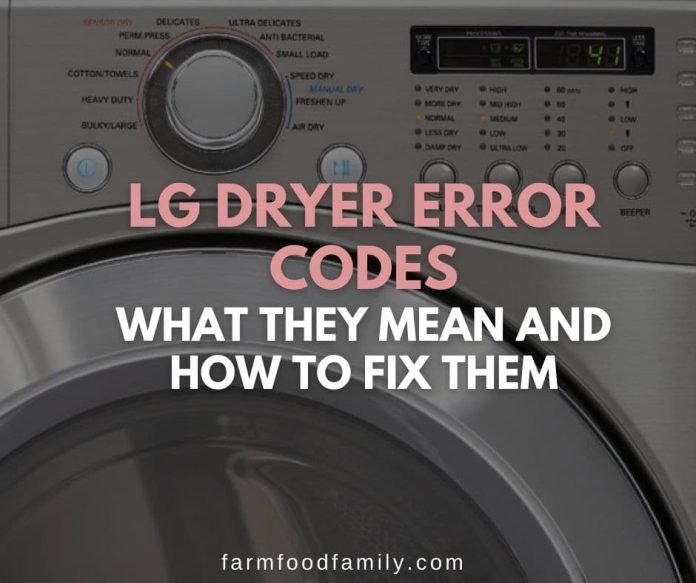
Error code SE on LG dryers is often related to issues with the motor or the sensors that help the motor function properly. It’s like when an athlete can’t perform because their muscles are not in sync with their nerves—it’s a coordination issue. The dryer relies on these internal components working harmoniously to perform its tasks efficiently. If one part fails, it can disrupt the whole cycle. But don’t worry! We’re going to break down how this happens and what steps you can take to avoid seeing this error code ever again.
Understanding the LG Dryer Error Code SE
When your LG dryer shows the SE error code, it typically points towards a sensor error related to the motor. This could mean two things: either the sensor that monitors the motor’s function has failed, or there’s an issue with the motor itself. Imagine trying to listen to your favorite radio station, but there’s static because the antenna isn’t picking up the signal correctly. Similarly, if the sensor isn’t working, the dryer can’t interpret how the motor is performing, causing a breakdown in communication.
Now, why is this important? Well, ignoring the SE error code is like ignoring that persistent knocking sound in your car engine—it could lead to more severe problems down the line. The motor is essentially the heart of your dryer; if it isn’t working properly, your dryer won’t dry clothes efficiently, and you’ll end up with damp, musty laundry. Plus, continuing to use a dryer with a sensor issue could potentially damage other parts of the machine, leading to costly repairs.
So, what’s next? Addressing the SE error as soon as it appears is crucial. This doesn’t just involve restarts or basic resets. You need to dig a little deeper to ensure the motor and sensor systems are in check. Fortunately, there are several preventive measures you can take to avoid encountering this issue again, ensuring your dryer remains in top-notch condition.
Causes of the SE Error
To prevent the SE error, it’s essential to understand its common causes. One major culprit is overloading the dryer. Think of it like stuffing your backpack with too many books—it’s not just heavy; it also strains the zippers and seams. Overloading your dryer puts undue stress on the motor, as it has to work harder to spin the drum, which can lead to overheating or sensor failure over time.
Another factor is poor maintenance. A dryer, much like any other household appliance, needs regular check-ups to function efficiently. Dust and lint can accumulate in and around the motor and sensor areas, hindering their performance. If you’ve ever noticed your vacuum cleaner losing suction because of a clogged filter, you understand the significance of regular cleaning.
Finally, sometimes environmental factors like high humidity or temperature fluctuations can affect the electronics inside the dryer. If your laundry room feels like a sauna or a freezer, it might be time to consider addressing the room’s climate to protect your appliance’s sensitive components.
Preventative Measures and Maintenance Tips
So, how can you prevent the SE error from rearing its ugly head in the future? First off, don’t overload your dryer. Just like breaking down a task into manageable chunks helps you perform better, splitting large laundry loads into smaller ones can ease the motor’s workload. This simple step can significantly prolong your dryer’s life by reducing unnecessary stress on its parts.
Next, develop a regular cleaning routine. Make sure to clean the lint filter after every use, and consider periodically vacuuming around the motor and sensor areas to keep them free of dust and lint. This is similar to how routine oil changes in your car keep the engine running smoothly by preventing buildup.
Lastly, consider improving your laundry room environment. Installing a dehumidifier can help manage moisture levels, while proper window treatments can regulate temperature extremes. By creating a stable environment, you’re setting up your dryer’s electronics for success.
In summary, preventing the SE error code on your LG dryer involves a bit of understanding, regular maintenance, and environmental control. Keep in mind that your dryer is a sophisticated machine that relies on every component to do its job efficiently. By following these steps, you’re not just addressing the problem at hand, but also ensuring long-term efficiency and reliability for your appliance. Ultimately, taking these preventative measures is like investing a little time now to save yourself from future headaches—because who wants to deal with emergency appliance repairs when all you need is a simple tweak here and there? Happy drying!